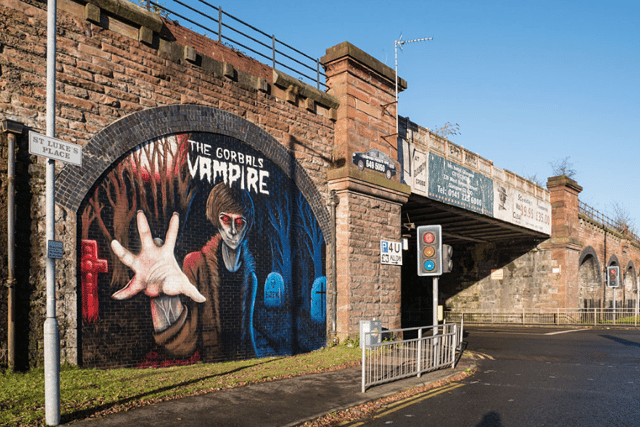Gorbals Vampire explained: Was the Glasgow folklore monster real?
and live on Freeview channel 276
Who (or what) is the Gorbals vampire?
In September of 1954, the schoolchildren of Glasgow swarmed the Southern Necropolis in search of the ‘Gorbals Vampire’.
Rumour at the time had it that Glasgow was home to a blood-sucking monster that loomed over the city’s schoolchildren at seven feet tall, flashing its nasty iron teeth at any young Glaswegians unlucky enough to meet him.
Advertisement
Hide AdAdvertisement
Hide AdPrior to the advent of Twilight, vampires were not sexy or cool in the slightest but viewed more as horrific nosferatu-eque figures that struck terror into the hearts of children.
Despite attempts from parents, police and teachers to quell the hysteria around the Gorbals Vampire it continued to make it’s rounds around the rumour mill, with some even saying that two young boys had been murdered and drained of their blood by the beast.
But rather than cowering inside tenement closes as you might expect, hundreds of kids across the Gorbals got together armed with their lockbacks, crosses, stakes, and dogs to hunt the Transylvanian beast holidaying in Glasgow.
As night fell, kids began to pour into the graveyard, traversing a thick fog to check under benches and behind headstones.


Advertisement
Hide AdAdvertisement
Hide AdThe atmosphere was certainly spooky, with the steelworks at the back of the Southern Necropolis casting a dark plume of smoke that blocked out any moonlight.
Flames from the towers at the works licked at the garden graveyard, casting dark shadows of graves and faint flickers of light in what was already a haunting evening.
The mist shrouded the schoolchildren as they searched, leading to many false alarms as the kids ran to and from figures emerging from the dense fog.
Eventually that first night’s hunt came to a close in typical Glasgow fashion when the rain came on - pushing the young ones back into their homes.
Advertisement
Hide AdAdvertisement
Hide AdNot to be deterred, the kids came back the night after that, and the night after that as well.
As no sightings were confirmed by reputable sources - kids began to drop off of the hunt - although the belief that the vampire of Gorbals was still out there continued to instil a certain amount of fear in school populations.
The story was picked up by the national press, which then began to reach the ears of the rest of the UK who whipped the city-wide panic into a national hysteria.
The campaign even reached parliament, where it was championed by Alice Cullen, Labour MP for the Gorbals, and resulted in the 1955 Children and Young Persons (Harmful Publications) Act being passed - an act which still stands today.
Who was the Gorbals Vampire?
Advertisement
Hide AdAdvertisement
Hide AdSadly, there was never any evidence of a Gorbals Vampire existing - apart from the testimony of schoolchildren who describe barely escaping his grasp. Similarly, there were never two young boys found half-eaten by a Glaswegian vampire in the early 1950’s.
Several theories have been posited as to where the idea of the Gorbals Vampire came from - at the time there was an American comic book called ‘The Vampire with the Iron Teeth’ - a likely culprit.
Another passage from the Bible, Daniel 7:7 reads:“Behold a fourth beast, dreadful and terrible, and strong exceedingly; and it had great iron teeth” - which would have been taught in schools.
The children may also have been inspired by ‘Jenny wi’ the Iron Teeth’, an old woman said to haunt Glasgow Green in the early 19th century.
Comment Guidelines
National World encourages reader discussion on our stories. User feedback, insights and back-and-forth exchanges add a rich layer of context to reporting. Please review our Community Guidelines before commenting.
